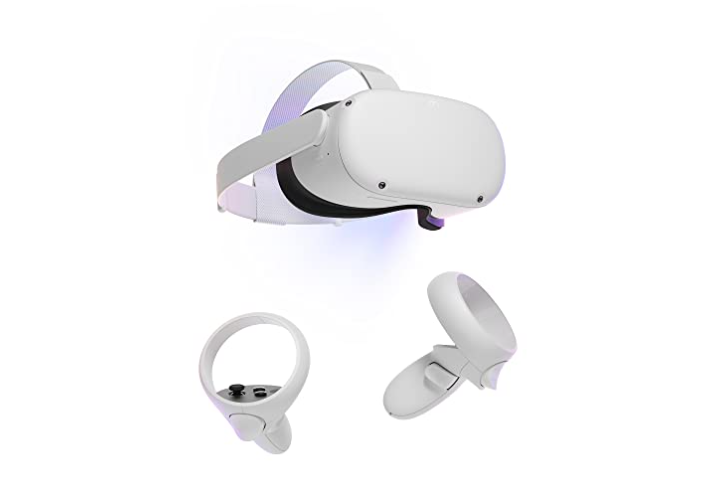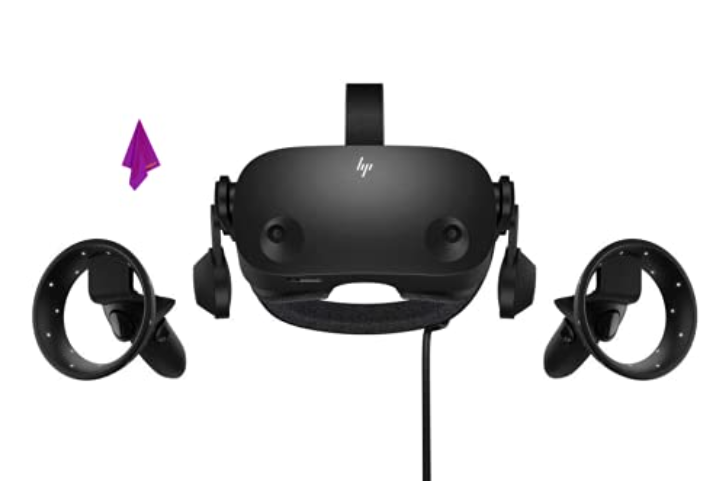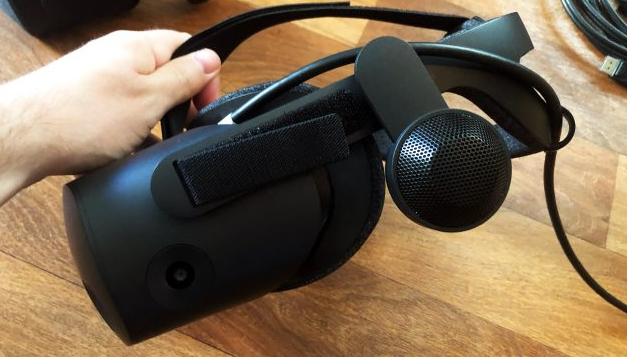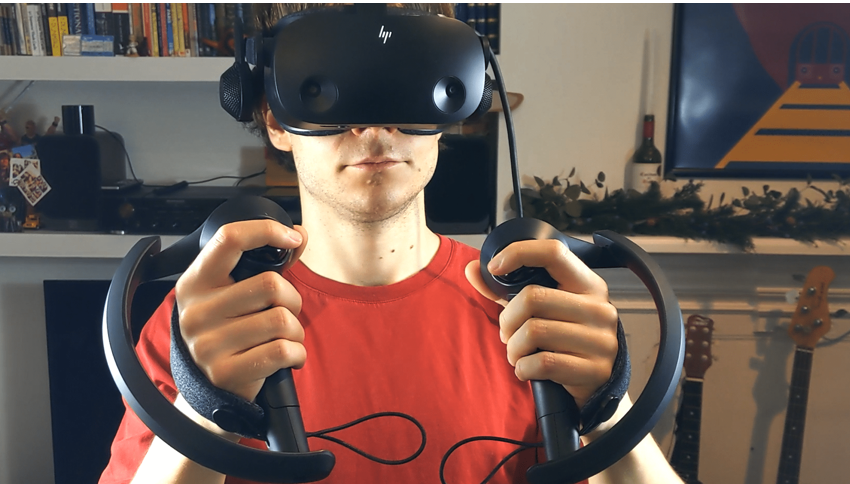The HP Reverb G2 virtual reality headset has gotten rave reviews from those who have tried it out, with many VR fans claiming it is the best VR experience they’ve ever had. But one question remains: Does the HP Reverb G2 need base stations? If so, how well does it function without them? In the following sections, we discuss a few ways the HP Reverb G2 could work without a base station and some of its advantages and drawbacks.
Over the previous few years, the consumer virtual reality headset industry has shrunk. HTC concentrated its Vive Pro and Vive Focus lines on professional use, while Facebook/Meta reduced its Oculus lineup to simply the standalone Quest 2. Microsoft’s Windows Mixed Reality platform has also suffered a mild culling, with HP being the only manufacturer other than HTC to produce a consumer headset.
Quest 2 | BUY ON AMAZON

The HP Reverb G2 is a simple, approachable VR headset comparable to the first Reverb we reviewed in 2019. The motion controllers on the headset are significantly more responsive than those on previous models, and everything works much more consistently with SteamVR.
Introducing Physical Improvements to HP Reverb G2 | BUY ON AMAZON

The updated HP Reverb G2 VR headset is an intriguing VR headset developed with Microsoft and Valve’s help. As a result, it’s meant to operate with SteamVR-enabled VR games and experiences and Windows Mixed Reality.
The HP Reverb G2 is designed to be a winner in various areas. It features Valve-designed “industry-leading optics,” an ultra-sharp display with a greater pixel count than other popular VR headsets, and a well-thought-out setup.
The Reverb G2 has a similar overall form to the original Reverb but with improved comfort and motion tracking. Two forward-facing cameras are on the front panel of the all-black headset, which has a smooth, plastic visor. They’re joined on the sides by a pair of cameras, an improvement over the original Reverb. It isn’t as camera-heavy as the HTC Vive Cosmos, which has six lenses. The Reverb G2, like all Windows Mixed Reality headsets, tracks its position exclusively through these cameras rather than using external sensors or beacons like the Valve Index. The pupillary distance is adjusted via a slider on the visor’s bottom (PD).
Visuals in High-Definition Games?
- Pulse Backlighting technology on two 2.89-inch LCD panels
- Fresnel-Aspherical lenses provide a 114-degree field of view.
- The refresh rate of 90 cycles per second (with recommended system specs)
- Resolution each eye is 2160 x 2160 pixels (4320 x 2160 in total)
- SteamVR and Windows Mixed Reality are both compatible with this game.
The HP Reverb G2 is a hybrid of the HTC Vive and the Oculus Rift right out of the box. Inside-out tracking cams and other modern VR headset features like off-ear speakers, but HP has gone with a simple black casing and a triple Velcro head strap system.
The light-up HP logo on the front, which shines while you’re gaming, is the sole design feature that sets it apart from the pack. However, you shouldn’t evaluate the Reverb G2 just on its appearance, as it has been carefully designed and includes some useful features.
Audio of Excellent Quality
The off-ear speakers are high-quality and give outstanding spatial audio without sitting on your ears the entire time. You can hear your surroundings if necessary, and more excellent because your ears aren’t always covered. Similarly, this configuration has fewer cables to worry about, which is always a plus in our book.
VR Gaming That Is both Comfy and Convenient

- For inside-out tracking, there are two front-facing cameras and two side-facing cameras.
- Off-ear speakers with spatial audio created by Valve
- Tracking with 6 degrees of freedom with an unlimited tracking space
- By hardware, 64mm +/- 4mm Slider for IPD
- Face cushions that can be replaced
- 500g around weigh
The HP Reverb G2 is made to be portable, comfy, and easy to operate. It’s not just the inside-out tracking that contributes to the end outcome; it’s also the other design aspects.
The headset, for example, is not just light (at 500g, or 1.2lbs) but also pleasant to wear, so we didn’t become as hot and humid as we usually do while using VR headsets. That’s excellent news.
Requirements for HP Reverb G2
You can mix and match to get Valve’s most recent designs up and running on G2. If you succeed, you’ll enjoy one of the best PC VR experiences available today. However, the hoops you’ll have to go through will eventually outweigh the viability of this strategy.
For starters, the Reverb G2 is a $600 investment in and of itself, but the Index controllers are also not cheap, costing $270 each if purchased individually. You’ll also need base stations, which cost about $150 each. You’re not finished; the Index Controllers require a receiver to connect to your PC. You could use the Vive Tracker pucks’ dongles, which start at $100. However, you can use an old SteamVR headset, such as the original Vive or an Index, if you have one hanging around. Does the HP Reverb G2 need base stations?
This HP headset, like the Oculus Rift S, uses inside-out tracking cameras, eliminating the need for external tracking base stations like the HTC Vive Cosmos Elite. As a result, there’s a VR headset that’s easier to put up, has more potential experiences, and outperforms everything else in terms of specs. Is it, however, truly that good? Let’s have a look at its benefits and drawbacks.
Pros:
- Sharp, high-resolution displays
- Immersive experience
- The setup is simple.
- Fantastic tracking from the inside out
- Near-field speakers that are excellent
Cons:
- Work on controllers is still needed
- Cable management is a nightmare.
Quick Note: Does HP Reverb G2 Make More Sense?
It isn’t the only high-resolution HMD (head-mounted device) on the market, but it is less expensive than the HTV Vive Pro 2. Unless you already have the controllers and base stations and can buy the headgear on its own, it features a “5K” display. Does the HP Reverb G2 need base stations? Inside-out tracking is available on the Reverb. There are no external base stations required. Four cameras in the Reverb detect your surroundings and modify the image in the headset accordingly. Now, you have to start the WMR portal and move the headset up/down and left/right to orient it, and you’re ready to go.
Conclusion
The Windows Mixed Reality elements, intuitive controls, a comfortable fit, and some of the best images make this headset a terrific virtual reality alternative. On the other hand, the bundled controllers aren’t our favorite, and we wish they were wireless. It is something that most people are unaware of. Does the HP Reverb G2 need base stations entirely? The secret to its success is its inside-out tracking technology, which eliminates the need for users to set up base stations or sync them with other devices. Of course, this functionality has a cost, as we discussed earlier.
Frequently Asked Questions
Will the HP Reverb G2 have wireless capabilities?
A: The HP Reverb G2 does not support wireless screencasting. Instead, the Reverb G2 is wired to a computer. The Windows Mixed Reality Portal opens instantly, and the screen is cast onto the PC monitor. It is not feasible to cast to a different screen wirelessly.
Is virtual reality terrible for your brain?
A: According to scientific data, virtual reality does not cause permanent brain damage in adults or children. Only a few symptoms arise during the VR experience, such as dizziness, despair, and collapse. The technology is still in its infancy and necessitates further examination and research.
How long should you spend each day in virtual reality?
A: The prevailing assumption is that you should use your VR headset for an hour before taking a fifteen-minute rest before returning.
Is it necessary for me to have my base stations plugged in?
A: Yes, because the base stations are mechanical devices, if you leave them plugged in without turning on power management and remain fully powered on and rotating, that time will be deducted from the unit’s lifespan
For full-body tracking, how many lighthouses do I need?
A: You’ll also need two lighthouses (at least $134 apiece for the earlier 1.0 lighthouses) if you wish to use body tracking with an Oculus Quest 2 or other VR gear. Few apps, such VRChat and Blade and Sorcery enable full-body tracking because of the high cost.
